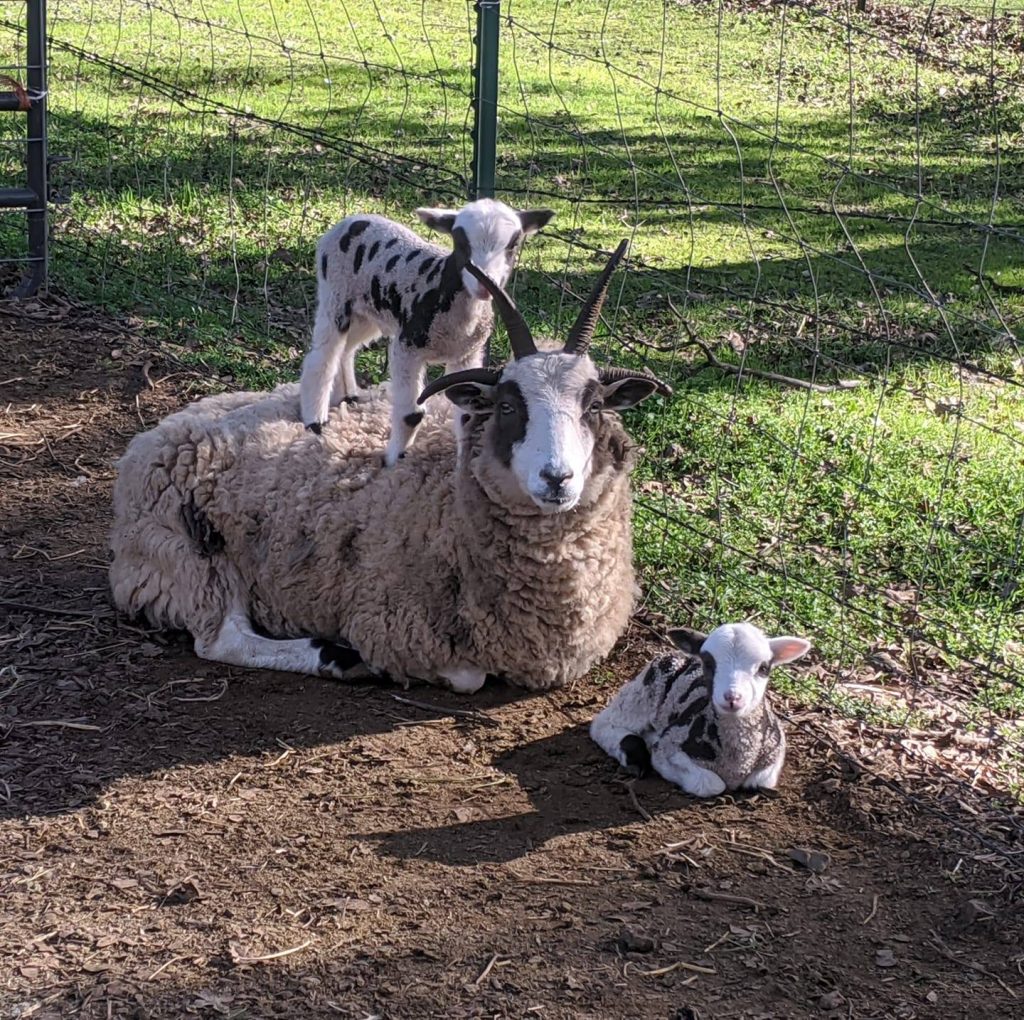Jacob Sheep have been a distinctive presence on English estates and country homes for centuries, thanks to their striking horns, black-and-white faces, and spotted coats. While their precise origins remain unclear, historical records suggest these sheep may have emerged in present-day Syria around 3,000 years ago. Visual evidence points to their gradual migration through North Africa, Sicily, Spain, and eventually England. Romantic tales surround the breed, such as connections to Jacob’s biblical flock (Genesis 30) or shipwrecks from the Spanish Armada during Elizabeth I’s reign.
Unique among British and Northern European polycerate breeds (those with multiple horns), Jacobs have a medium-fine fleece without an outer coat, unlike the double-coated primitive breeds with both fine and coarse layers.

In the early 1900s, small numbers of Jacob Sheep were imported to the U.S. and Canada. These were dispersed and sometimes crossbred, leading to hybrid offspring often mislabeled as Jacobs despite minimal resemblance.
American Jacobs retain their old-world characteristics, having avoided selective breeding for commercial purposes. They feature a slender build, a lean, flavorful carcass with little fat, and a high yield from hanging weight to freezer. Their finer bone structure and lower body fat also enable higher stocking rates, with reported increases of 25% to 50% compared to modern breeds. Ewes need less supplemental feed during high nutritional demands, lamb easily without assistance, and produce vigorous lambs. Known for their hardiness, strong maternal instincts, and resistance to parasites and foot issues, Jacob ewes are commonly included in English commercial flocks. Their fleece, prized for its softness and light grease, is especially popular with hand spinners.
Jacob Sheep are highly marketable as breeding stock. They also provide financial returns through farm gate sales of freezer lamb, tanned pelts, hand spinners fleeces, and horns used for walking sticks or buttons—all while offering the pleasure of seeing such an elegant breed in the pasture.